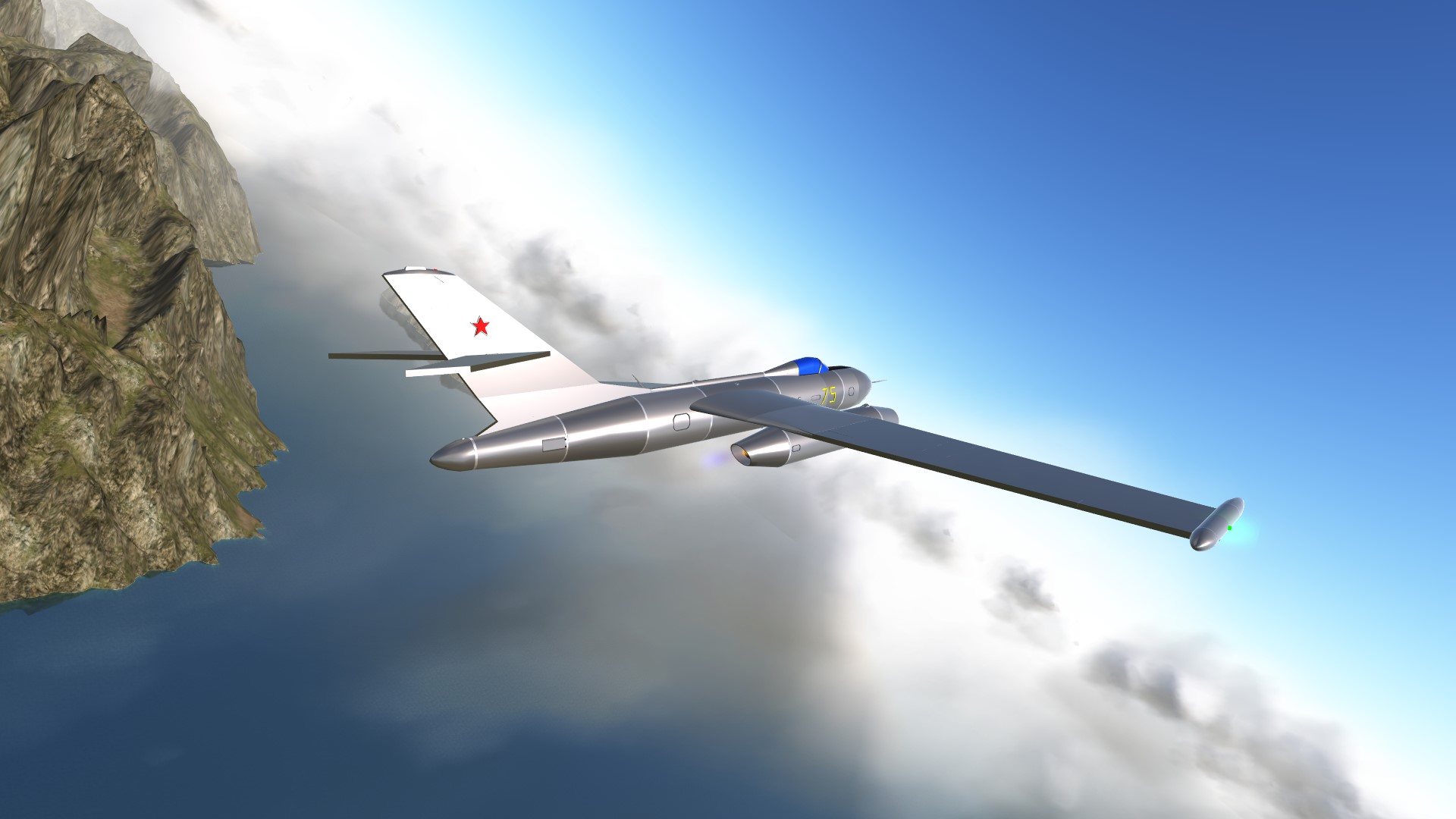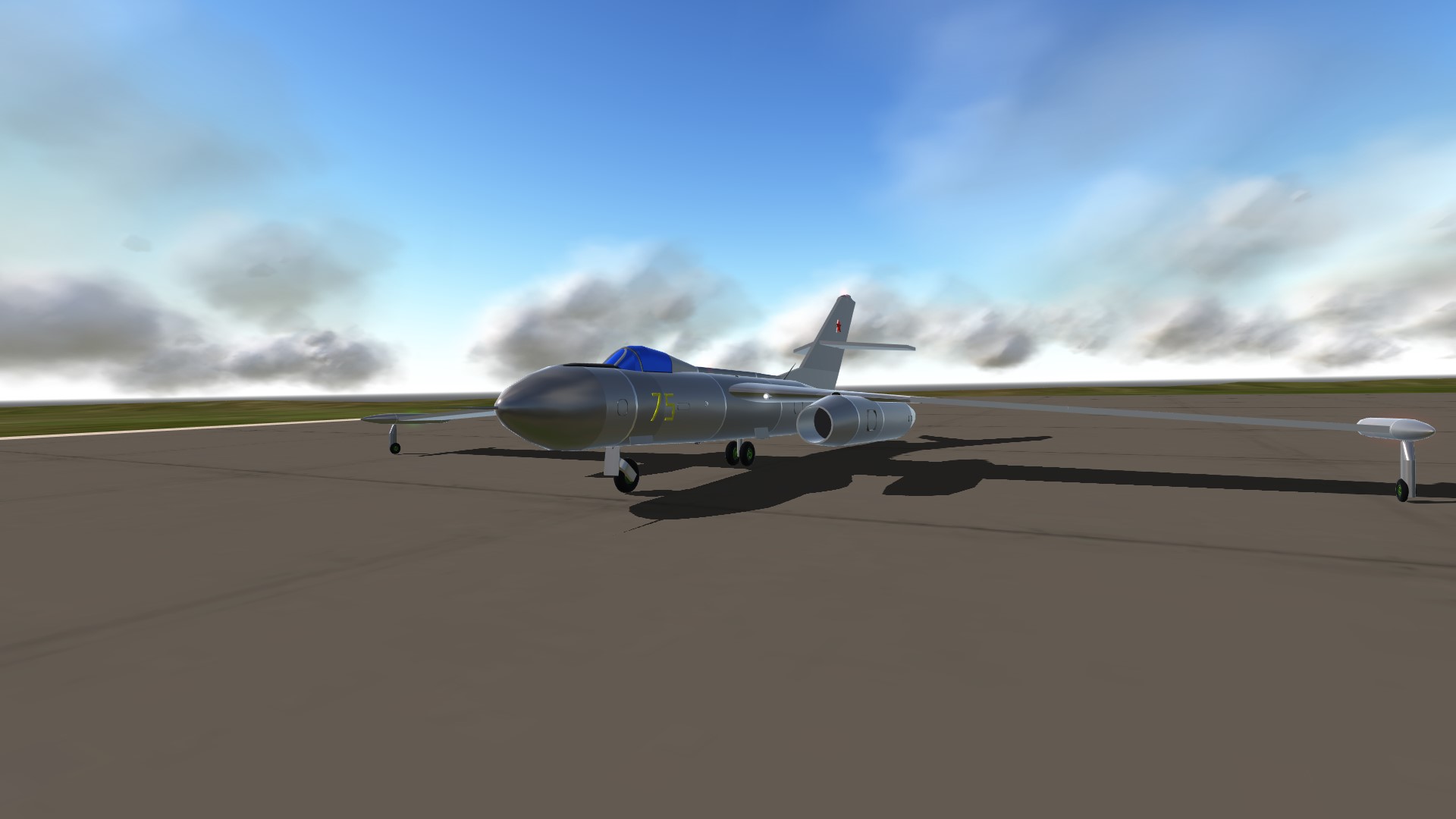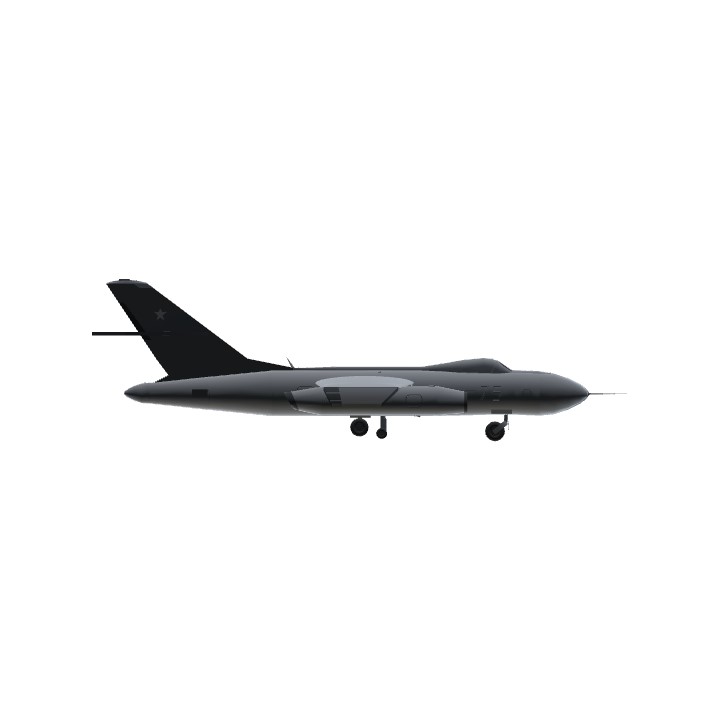( English version at the bottom of the page )
Je vous présente aujourd'hui une des nombreuses histoires de l'aviation soviétique .
À la fin de la vie de production du Yak-25 , l'OKB Yakovlev a été chargé de développer une version haute altitude , un
avion de reconnaissance stratégique désigné "Yak-25RV" . "Razvedchik Visotniy" signifiait (Reconnaissance Haute Altitude) .
Le vol initial du prototype eu lieu le 1 Mars 1959, avec le pilote d'essai V.P. Smirnov aux commandes. Quand l'OTAN a eu vent
de l'avion , il lui a été affecté le nom de "Mandrake". Le Yak-25RV a été tellement modifié par rapport au Yak-25 de base qu'il
semble plausible la désignation Yak-25 a été retenue en partie comme une couverture . La seule chose que le Yak-25RV avait en commun
avec le Yak-25 était son fuselage arrière . il comportait un nouveau fuselage avant , un cockpit monoplace , une caméra dans le nez .
Des caméras étaient aussi installées dans le ventre . Les ailes étaient droites avec une portée de 23,5 mètres . Un turboréacteur
Tumansky R-11V-300 installé sous chaque aile . Le R-11V300 était une version haute altitude sans post-combustion
du moteur R-11 utilisé sur le Mikoyan MiG-21 . Le Yak-25RV n'était pas armé .
Le VVS (Voyenno Vozdushniye Sily / Armée de l’air rouge) a jugée la conception adéquate et a ordonné sa production en 1961 .
Les détails sont restés mystérieux en Occident pendant un certain temps . Il a établi un record mondial d’altitude à 20 174 mètres , le
29 juillet 1964 avec V.P. Smirnov aux commandes . 74 Yak-25RV ont été construits , y compris un petit nombre d'appareil dépourvu de moyens de
reconnaissance et utilisé par les Soviétiques pour tester les interceptions à haute altitude , dans l’espoir de savoir comment abattre
des avions-espions comme les Lockheed U-2 . Appelés Yak-25RV1 , certains modèles ont été équipés d'une radiocommande pour être utilisés
comme cibles pour le tir réel . Un lot de 81 drones cibles radiocommandés ont également été construits neufs , ces machines étant désignées
"Yak25RV-2". Toute la production de Yak-25RV était terminée en 1965 . Le Yak-25RV est resté en service de première ligne avec le
VVS jusqu'au début des années 1970 . Les images semblent indiquer qu'il volait normalement dans des couleurs de métal naturel .
On sait qu'il a survolé le Pakistan , l'Inde , la Chine et le nord du Japon . Il n’a jamais effectué de survol de l’Europe
occidentale , surement à cause des défenses anti-aériennes . À la fin des années 1960 , une poignée de Yak-25RV ont été configurés pour
la mission de "reconnaissance du rayonnement" avec la désignation "Yak-25RR" .
"RR" signifie "Radiatsionniy Razvedchik , (Radiation Reconnaissance) ". Ils étaient équipés de pylônes en dessous des ailes pour
transporter deux nacelles standards qui contenait des filtres en papier pour piéger les particules de retombées de l’atmosphère .
Au début des années 1970 , quelques Yak-25RV ont été modifiés en tant que plates-formes SIGINT et désigné "Yak-25RRV", "RRV" signifiant
"Radioteknichevskiy Razvedchik Vysotny" , ( Signaux Radio de reconnaissance haute altitude) . Ils ressemblaient beaucoup au Yak-25RR
avec un pylone sous chaque aile .
Une version du Yak-25RV était également prévue pour abattre des ballons.
Au cours des années 1950, les États-Unis ont tenté d’utiliser des ballons à haute altitude pour effectuer des survols de reconnaissance de
l'Union soviétique . Selon des sources américaines , cela a été fait pendant quelques mois au début de 1955 , en utilisant des centaines
de petits ballons , essais reconduits en 1958 avec trois très grands ballons . Les deux ont été des échecs embarrassants .
Les États-Unis ont abandonnés ces vols , mais des sources russes insistent sur le fait que les survols de ballons de reconnaissance
se sont poursuivis au cours des années 1970 . Quoi qu’il en soit, le programme d’intercepteurs de ballons a été annulé sans vol de prototype .
Traduit et mis en page par mes soins .
La version reproduite est le 75 jaune , réalisée d'après photo .
Décollage avec les volets à fond . Correction au palonnier pendant le roulage . Deux caméras équipent mon modèle , comme l'original .
Une sous le nez et une sous le ventre de l'appareil .
Réacteur gauche : touche 1 .
Réacteur droit : touche 2 .
Feux de navigation : touche 3 .
Feux d'atterrissage : touche 4 .
Aérofrein : touche 5 .
Parachute : touche 6 .
Verrouillage train avant : touche 7 .
Volets : Vtol bas .
Trim : Trim .
English version .
I present to you today one of the many stories of Soviet aviation.
At the end of the production life of the Yak-25, OKB Yakovlev was commissioned to develop a high altitude version, a
strategic reconnaissance aircraft designated "Yak-25RV". "Razvedchik Visotniy" meant (High Altitude Recognition).
The initial flight of the prototype took place on March 1, 1959, with test pilot V.P. Smirnov at the controls. When NATO got wind
from the plane, he was assigned the name "Mandrake". The Yak-25RV has been so modified compared to the basic Yak-25 that it
seems plausible the designation Yak-25 was retained in part as a cover. The only thing the Yak-25RV had in common
with the Yak-25 was his rear fuselage. it had a new front fuselage, a single-seater cockpit, a camera in the nose.
Cameras were also installed in the belly. The wings were straight with a range of 23.5 meters. A turbojet
Tumansky R-11V-300 installed under each wing. The R-11V300 was a high altitude version with no afterburner
of the R-11 engine used on the Mikoyan MiG-21. The Yak-25RV was not armed.
The VVS (Voyenno Vozdushniye Sily / Red Air Force) judged the proper design and ordered its production in 1961.
The details have remained mysterious in the West for a while. He set a world altitude record at 20,174 meters, the
July 29, 1964 with V.P. Smirnov at the controls. 74 Yak-25RV were built, including a small number of aircraft without means of
reconnaissance and used by the Soviets to test interceptions at high altitude, hoping to know how to shoot down
spy planes like the Lockheed U-2. Called Yak-25RV1, some models have been equipped with a radio remote control to be used
as targets for the actual shot. A batch of 81 radio-controlled target drones were also built new, these machines being designated
"Yak25RV-2". All production of Yak-25RV was completed in 1965. The Yak-25RV remained in front line service with the
VVS until the early 1970s. The images seem to indicate that he normally flew in natural metal colors.
It is known that it flew over Pakistan, India, China and northern Japan. He never flew over Europe
Western, surely due anti-aircraft defenses. In the late 1960s, a handful of Yak-25RVs were configured to
the "radiation recognition" mission with the designation "Yak-25RR".
"RR" means "Radiatsionniy Razvedchik, (Radiation Recognition)". They were equipped with pylons below the wings for
carry two standard nacelles that contained paper filters to trap the fallout particles from the atmosphere.
In the early 1970s, some Yak-25RVs were modified as SIGINT platforms and designated "Yak-25RRV", "RRV" meaning
"Radioteknichevskiy Razvedchik Vysotny", (High Altitude Radio Recognition Signals). They looked a lot like the Yak-25RR
with a pylon under each wing.
A version of the Yak-25RV was also planned to shoot down balloons.
In the 1950s, the United States attempted to use high altitude balloons to fly reconnaissance
The soviet union . According to US sources, this was done for a few months early in 1955, using hundreds
small balloons, tests repeated in 1958 with three very large balloons. Both were embarrassing failures.
The United States has abandoned these flights, but Russian sources insist that the flights of reconnaissance balloons
continued in the 1970s. In any event, the balloon interceptor program was canceled without a prototype flight.
Translated and formatted by me.
The version reproduced is the 75 yellow, made according to photo.
Takeoff with flaps at the bottom. Rudder correction while driving. Two cameras equip my model, like the original.
One under the nose and under the belly of the device.
Left reactor: key 1.
Right reactor: key 2.
Navigation lights: key 3.
Landing lights: key 4.
Airbrake: key 5.
Parachute: key 6.
Locking front axle: key 7.
Shutters: Vtol down.
Trim: Trim.
Specifications
Spotlights
- Tang0five 6.1 years ago
General Characteristics
- Predecessor Yak 25
- Created On Windows
- Wingspan 71.0ft (21.7m)
- Length 52.6ft (16.0m)
- Height 16.0ft (4.9m)
- Empty Weight 22,851lbs (10,365kg)
- Loaded Weight 43,865lbs (19,897kg)
Performance
- Power/Weight Ratio 1.536
- Wing Loading 110.8lbs/ft2 (540.8kg/m2)
- Wing Area 396.0ft2 (36.8m2)
- Drag Points 7624
Parts
- Number of Parts 188
- Control Surfaces 7
- Performance Cost 917








@XEPOH , Thanks for your upvote .
@UseGooglePlay , thank for your upvote .
@nameisalreadytaken , thank for your upvote .
@D0M1N420R , thank for your upvote .
@Carbonfox1 , thank for your upvote and your comment .
Ah, the long-wing flashlight very nice build
@edensk , thank for your upvote .
Yep
@SuperSix , thank for your upvote .
@SanitaterAirlines , thank for your upvote .
@Lorileni, thank for your upvote.
Lovely plane
@MEERKAT978 , thank for yours upvote .
@ChiChiWerx , thank for your upvote . Could you detail your criteria ?
@Trainzo de rien :)
Interesting build of a little known Soviet type. I personally am always interested in ultra high altitude aircraft. I was very curious when I read in your description that it had set the altitude record in 1964, a few years after which both the U-2 (70,000’+) and the A-12 (SR-71 predecessor, 80,000’+) had flown and set records far in excess of 20,174 meters, which is only just over 66,000 ft. Heck, when I flew the U-2 myself, I exceeded 66,000’ on practically every single high altitude sortie. Anyway, nice build, sorry I cannot Spotlight it as you have far exceeded my own point total 👍!
@Sgtk , @grizzlitn , thanks for yours upvotes my friends .
@Trainzo np
@Trainzo no problem my friend!
@Tang0five , thank for have spotlighted my plane and thank for your upvote .
@Mustang51 , Thanks again for your nice comment . It's very nice .
Good subject material and build once more!
@SimpleBoii , I will search and tell you . The longest wing at Yakovlev is the Yak 25RV that's it , but it's not a fighter.
@AircraftoftheRedStar , thank for your upvote and your comment my friend .
@Mustang51 , @SimpleBoii , thanks for yours upvotes and yours comments . I really appreciate .